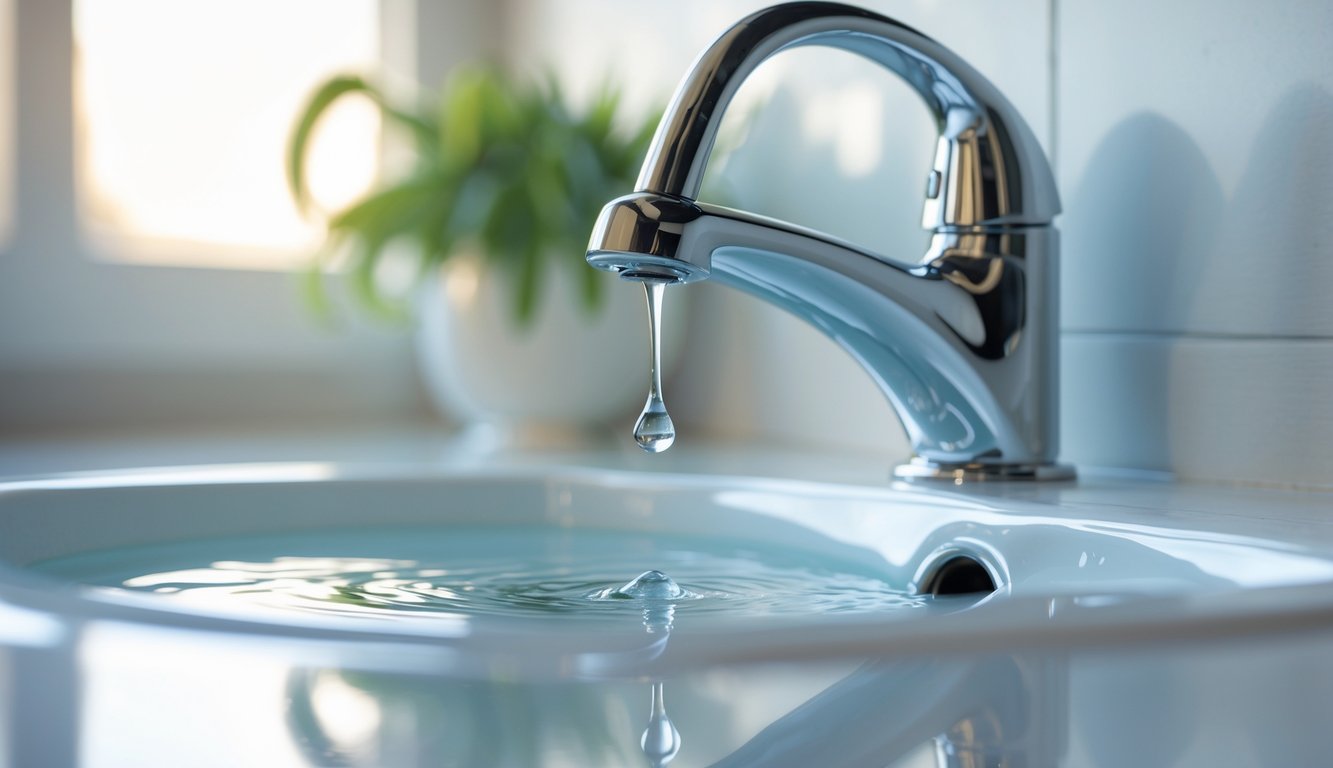
Common Causes of Faucet Leaks
Every time someone finally fixes a leak, they find like three other things wrong. It’s never just the washer, never just corrosion, always something weird. Whether it’s a slow drip or a surprise face spray, kitchens and bathrooms are basically designed to waste water and money if you’re not paying attention.
Worn Faucet Washers and O-Rings
If you hear that drip at 2 a.m., it’s almost always the washer or o-ring. Plumbers blame them first, and they’re usually right. I’ve seen people replace fancy cartridges, only to find the real problem was a tiny, chewed-up washer.
Most of the time, it’s old, brittle washers or o-rings that look fine but leak under pressure. Not all washers are rubber—some are ceramic or neoprene, and the cheap ones fall apart twice as fast. I once bought a “universal” o-ring kit, and the size I needed was always missing. Every single time. Especially if you’ve got a faucet from the 90s hiding somewhere. If the washer’s even a millimeter off, you’re back to square one. Meetze Plumbing’s repair tips basically say the same thing: fit matters, or you’ll be chasing leaks forever.
Corrosion and Mineral Buildup
Corrosion just destroys everything. Fast. You ever take apart a faucet that looks fine from the outside, only to find the guts eaten through like a half-melted soda can? I’ve seen “10-year-old” fixtures that look showroom on top, but underneath—nope, it’s all chewed up valve seats and threads, like some kind of metal-eating termite moved in. It’s not just “hard water” either; cities mess with water chemistry, and suddenly your faucet’s leaking for no reason. Seriously, one day it’s fine, next day the kitchen’s got a puddle.
I’ve scraped out so much green crust and chalky gunk from inside faucets, I could probably start a rock collection. That stuff blocks the water, so it finds any crack or pinhole, then you’ve got leaks under the handle and weird whistling noises that make you wonder if your house is haunted. Some tech from a big faucet company once told me: abrasive cleaners? Don’t even try it, unless you want to scratch the finish and make corrosion even worse. But if the faucet leaks, guess who gets blamed? Not the cleaner, that’s for sure.
Sometimes, I’ll just rip out an old faucet instead of fighting the cemented-on limescale. It’s faster. DIY folks always think vinegar soaks will fix everything—sure, if you actually remember to do them, which nobody does until the leak’s already dripping onto your socks (see Do It Best on leak causes). Procrastination: undefeated.
Leaking Valves and Loose Parts
Valves just don’t stay tight. Never have for me, anyway. Even the “fancy” fixtures get wobbly after a couple years, and then water sneaks out under the handle or where the spout meets the body. Replace the washers? Sometimes fixes it. Sometimes, nope, now you’re hunting down a cartridge or a tiny valve that only exists in double-handle setups, and you need tweezers and saint-level patience to rebuild it.
I once overtightened a bonnet nut on a laundry faucet and cracked it. That was a fun lesson in “snug” not meaning “crank it until it breaks.” Screws, locknuts, those little set screws—water hammer or just an accidental elbow can loosen them, and suddenly there’s a puddle under the cabinet and mystery parts rattling around.
Aerators and stem screws? They’re sneaky. Leaks only show up if you jiggle the spout, and nobody warns you about that except old pros. Loose or busted connections are everywhere, especially in houses built before 1980 (see top five trouble spots). Miss one step and you’ll be fixing the same leak again next weekend. Ask me how I know.
Hidden Dangers: The Health Risks of Leaky Faucets
Nobody tells you that ignoring a slow drip in the bathroom can make your kitchen smell like a science experiment gone wrong. Or that “just a spot” on the ceiling is actually a warning sign for something way grosser. And the real kicker? Nobody brings up how a leak could be messing with your water while you’re brushing your teeth. Pipes are supposed to keep us safe, not sneak in stuff that makes us sick. But honestly, who trusts plumbing anymore? Certainly not my wallet.
Mold and Mildew Growth
Ever found mildew hiding behind your shampoo? Gross. Hard water stains are nothing compared to what’s growing inside the walls. Mold just wants you to ignore it—and it wins if you do. A plumber showed me the inside of a vanity once: black fuzz everywhere, all from a faucet that dripped for months. Nobody even thinks about it until the coughing starts, or the sinuses get angry, or your neighbor starts giving you side-eye about a weird smell.
CDC’s got the receipts: damp, moldy homes bump up your risk for breathing problems and asthma. Not just “my mom’s allergies,” but actual, official stuff. Ignore that purple grime? Yeah, you’ll regret it. Sometimes you’re one missed cleaning away from calling in mold pros, not just grabbing a new candle. If the grout smells musty? Maybe worry about your lungs. I do.
Water Quality Concerns
Forget “saving water” for a second—who counts drips anyway? What’s worse is what’s leaking into your water. Old faucets corrode, and now you’ve got metal bits or gasket slime in your glass. Real plumbers talk about water quality risks, and not in theory. Copper, lead, zinc—ever see a 12-year-old brass fitting? It’s not pretty, and pretty sure it’s not great for your kidneys.
Then there’s the water that tastes weird, makes your tea cloudy, or leaves green streaks in the sink. Nobody warns you, except the people who’ve already paid three plumbers to “check upstream.” White flecks floating in your cup? That’s not “flavor,” that’s minerals from somewhere they shouldn’t be. Tap water should be boring. Leaky faucets make it a roulette wheel.